 |
 |
 |
| |
BIOLOGICAL PROFILES PREDICT CORONARY ARTERY
DISEASE IN PWH AND RISK-MATCHED CONTROLS
|
| |
| |
CROI 2021 March 6-10 Reported by Jules Levin
Padraig McGettrick1, Willard Tinago1, Alejandro Garcia-Leon1, Julie O'Brien2, Niall Mahon3, Leo Lawler3, Aoife G. Cotter1, John S. Lambert1, Gerard Sheehan3, Alan Landay4, Caroline Sabin5, Patrick Mallon1
1University College Dublin, Dublin, Ireland, 2University Hospital Limerick, Limerick, Ireland, 3Mater Misericordiae University Hospital, Dublin, Ireland, 4Rush University, Chicago, IL, USA, 5University College London, London, UK
Background: Inflammation has been implicated in the increased risk of coronary artery disease (CAD) observed in individuals with HIV (PWH) with the immune or inflammatory pathways contributing to CAD not well defined.
Methods: The HIV UPBEAT CAD sub-study enrolled PWH >40 years old on effective antiretroviral therapy (ART) and uninfected controls propensity matched for CAD risk. We used coronary computed tomography angiography (CCTA) to estimate subclinical CAD and performed chemiluminescence immunoassays to evaluate 28 biomarkers of systemic, innate and vascular inflammation and 10 T-cell immune markers by flow cytometry. Principal component (PC) analysis was used to reduce data dimensionality followed by PC-based unsupervised hierarchical clustering to partition participants into biomarker-derived clusters. Associations between clusters and subclinical CAD were explored using logistic regression with additional adjustment for HIV status. Data are median (interquartile range) unless specified.
Results: Of 101 participants (51% PWH), 72% were male, 75% Caucasian and median age 49 (45, 55) years. 35.6% had subclinical CAD (32% of PWH). We identified three clusters (figure 1a): Cluster 1 (n=41, 32% PWH) characterised by lower T-cell senescence and activation and lower TNF, TNF R1/2 and IL1ra; Cluster 2 (n=40, 72% PWH) characterised by higher T-cell senescence and exhaustion (higher T-cell senescence, activation, effector T cells, higher TNFR1/2, MIP, but lower IL2, IL12 and IFN); and Cluster 3 (n=19, 52% PWH) characterised by higher inflammation (higher IL2, Il12, IFN, IL4, IL10, TNF, IL6, IL1b, IL1ra, IFABP). With the exception of HIV status, baseline demographics were similar between clusters including CD4+ T-cell count and CD4+CD8+ ratio for PWH. Compared to those in Cluster 1, those in Cluster 2 and 3 had greater presence of any coronary plaque, partially calcified and calcified plaque, an association which for cluster 2 strengthened after adjustment for HIV status (figure 1b). In contrast, participants in Cluster 3 had higher calcification scores [Agatson score >100, Calcium volume score >100] which persisted in adjusted analyses.
Conclusion: In a cohort of CAD risk-matched individuals with and without HIV, we identified two clusters associated with distinct characteristics of subclinical CAD, one characterised by T cell senescence and exhaustion, the other by systemic inflammation. Biological phenotyping may help better predict those at risk of long term comorbidities common in ART treated PWH.
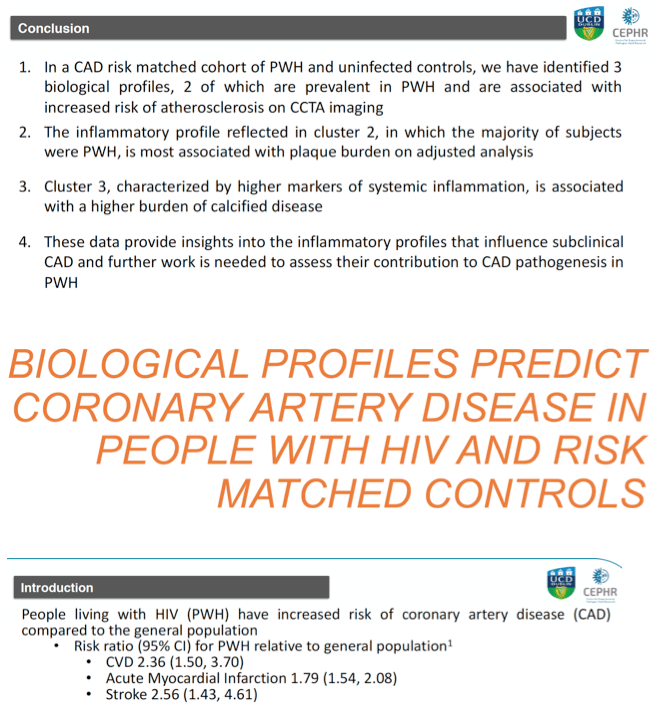
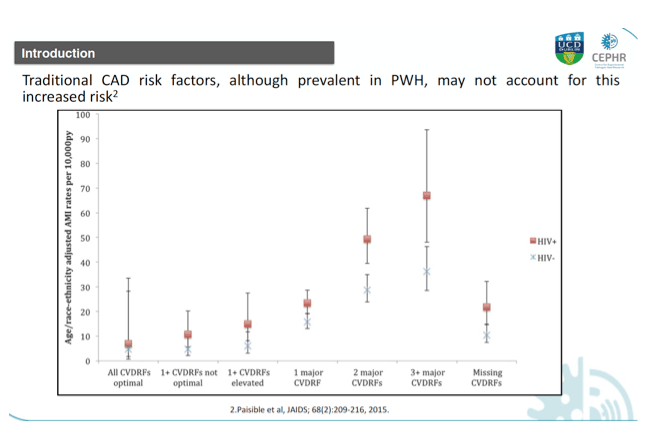
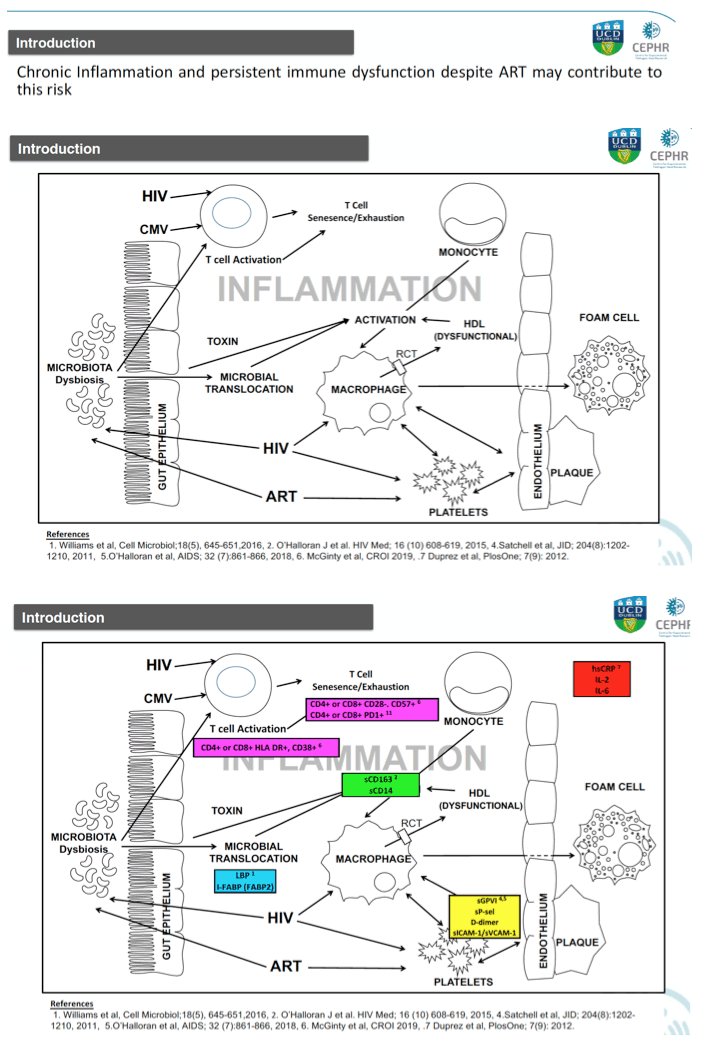

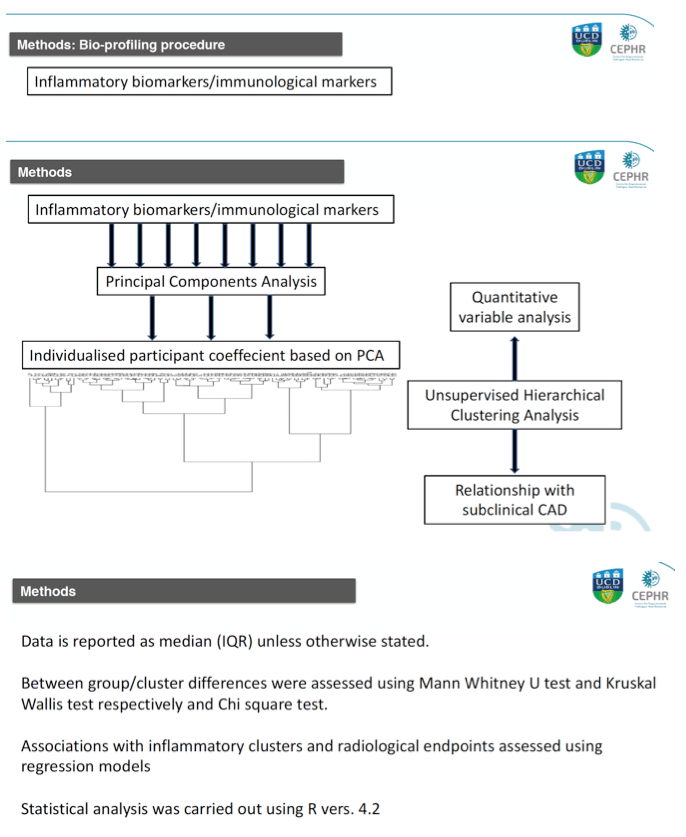
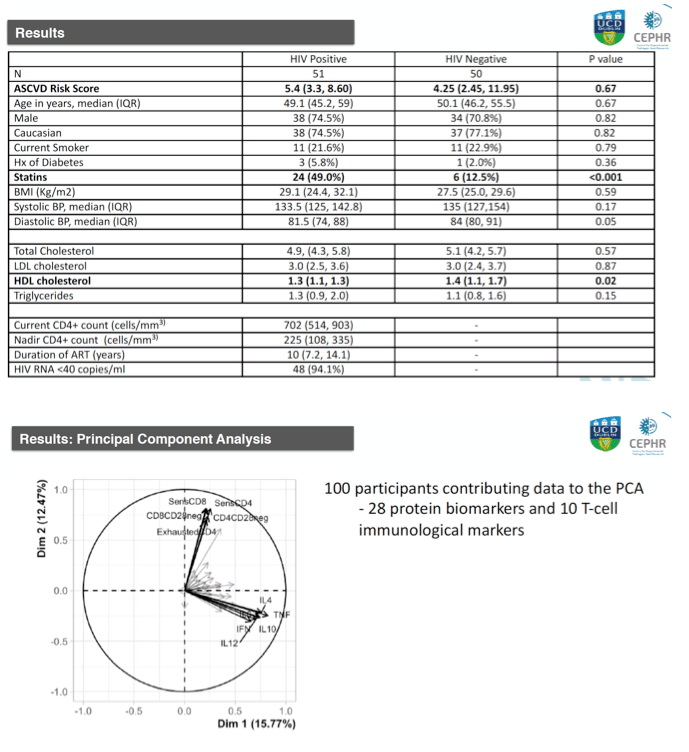
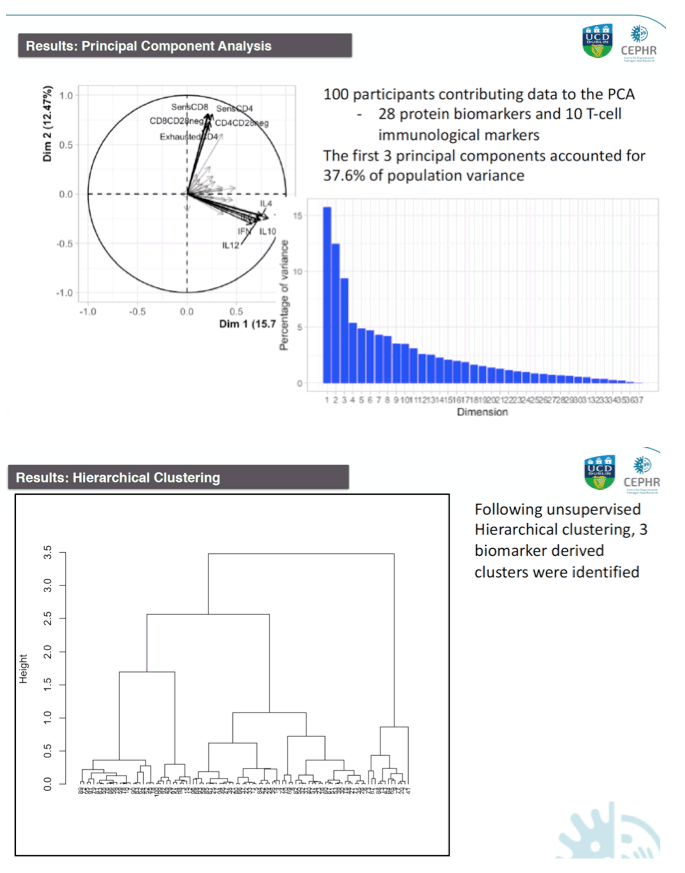
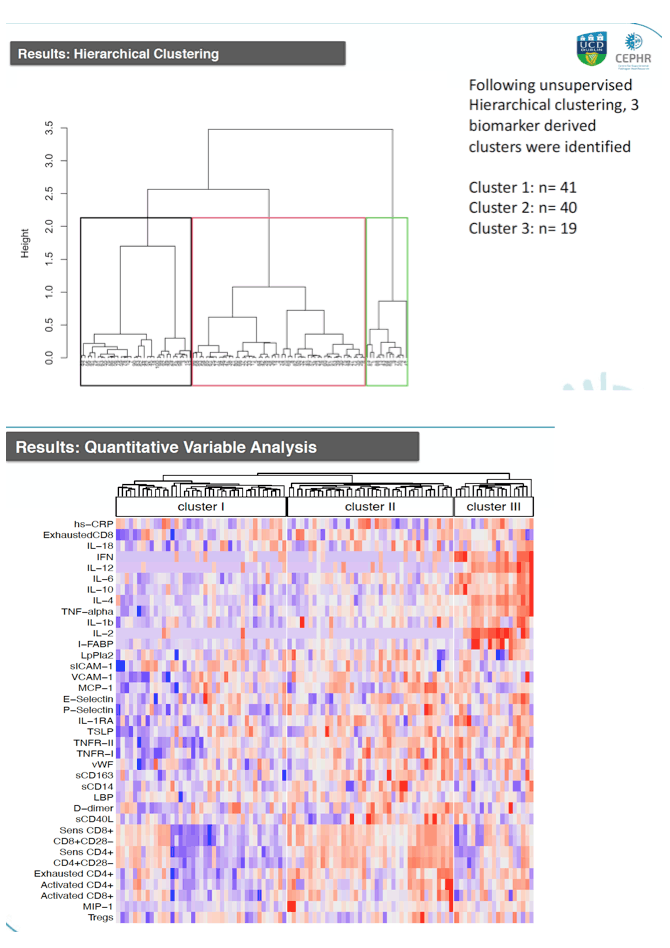
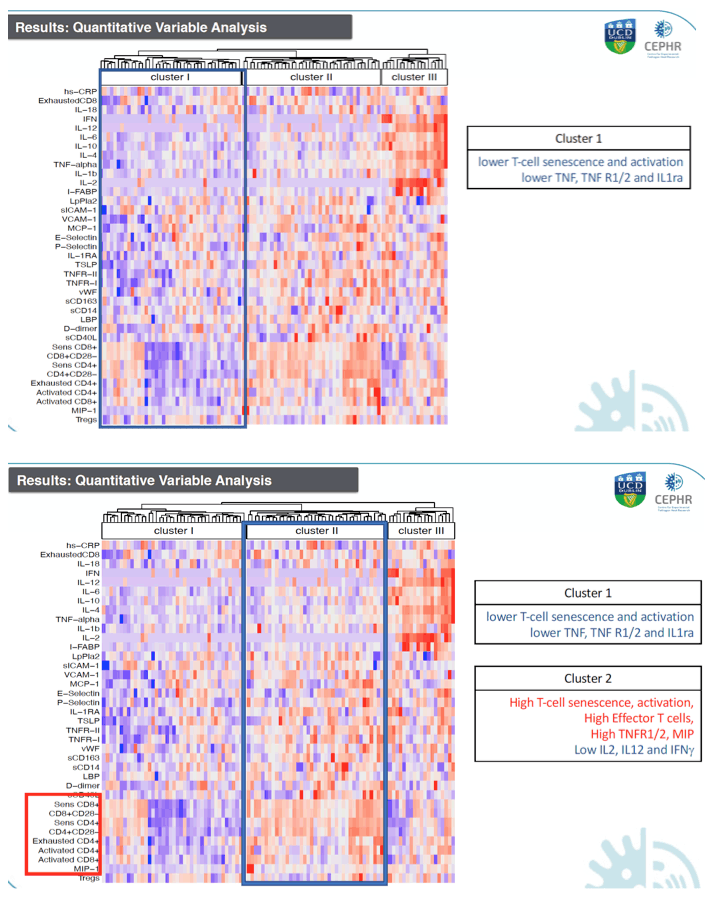

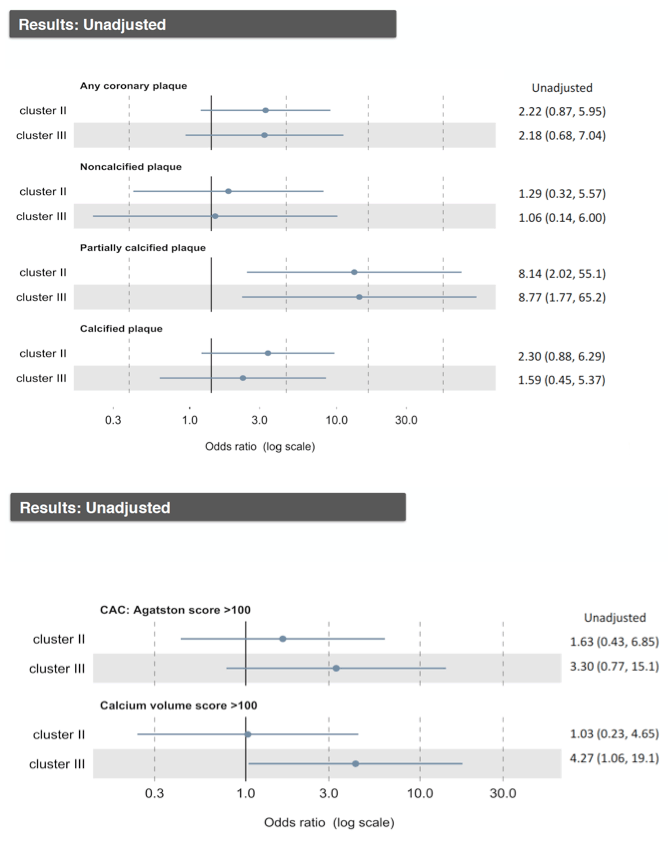
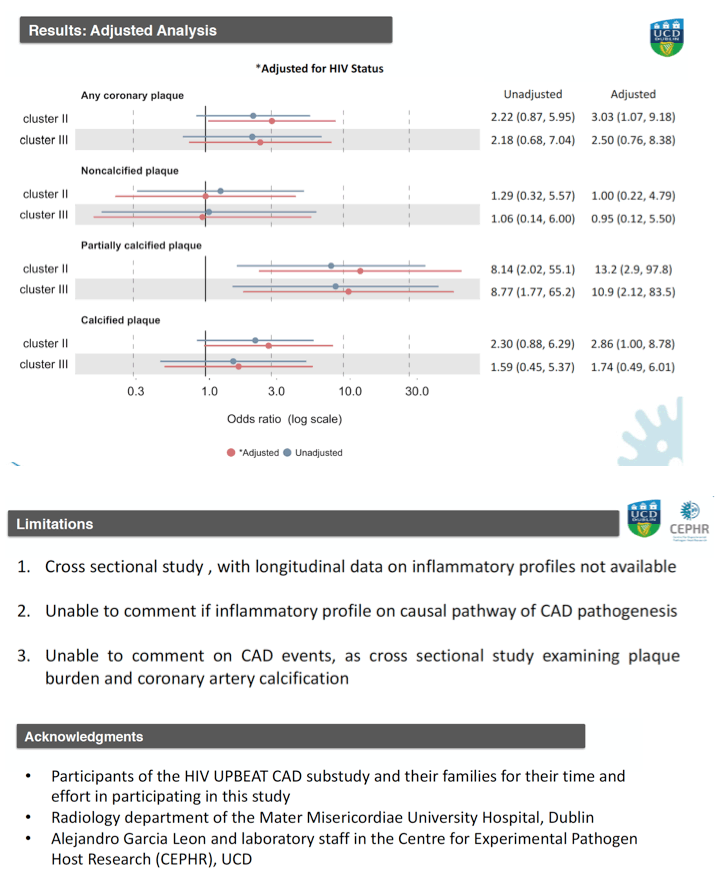
|
| |
|
 |
 |
|
|